Captain Sir Eyre Massey Shaw was born on 17 January 1830 in Cobh in Ireland. He was a cousin of the author and playwright Sir George Bernard Shaw.
During his youth he spent time sailing his father’s yacht and preparing himself for a life in the clergy. However, after receiving his degree at Trinity College Dublin, he decided to travel to America where he gained his first experience of firefighting in New York, Washington, and Philadelphia.
However, Shaw’s family decided that he should return home and settle down, so they secured him a commission in the North Cork Rifles in 1855. Within six years, he had been promoted to captain and had a family to support.
An opportunity arose to continue with his firefighting ambitions when the City of Belfast advertised for a new Fire Chief. Having got the job, in June 1860 Shaw moved his family to Belfast. Within a short time, he was able to transform the officers and firefighters of Belfast into a well-disciplined brigade, which was well respected in the city.
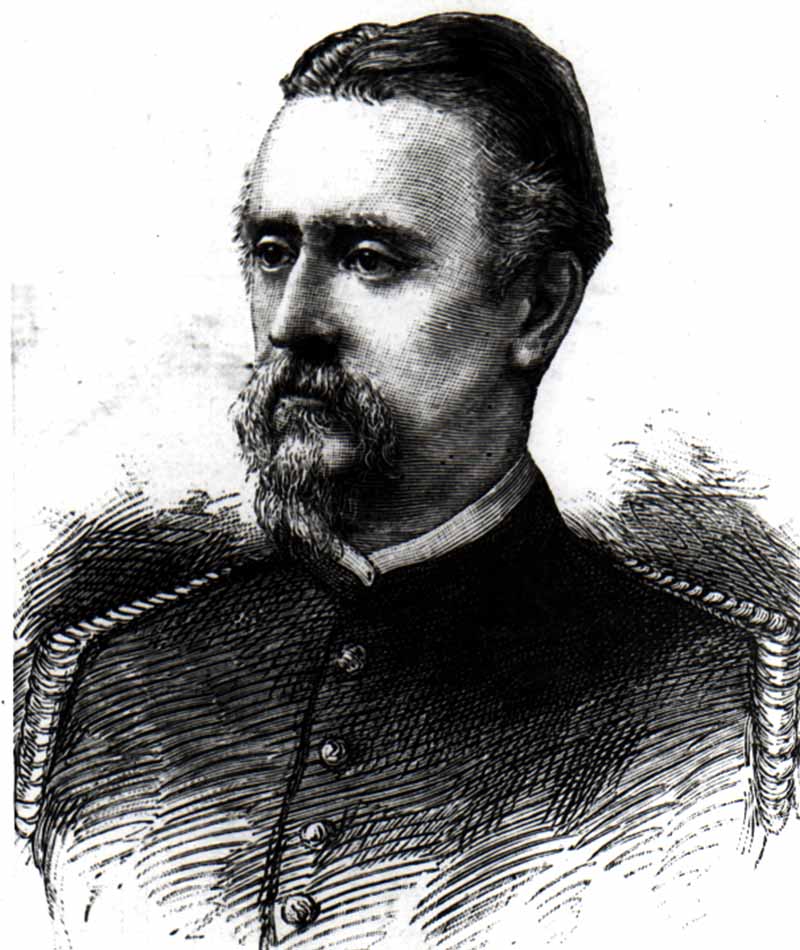
Shaw’s work in Belfast was short lived. In 1861, he replaced the Superintendent of the London Fire Engine Establishment (LFEE), James Braidwood following his death at the Tooley Street Fire.
On taking over his new role, Shaw found his new command was suffering from a lack of both men and resources despite the growing number of incidents the LFEE was required to attend. The LFEE was funded by 10 Insurance Companies, and Shaw set about petitioning the government and City of London to provide additional funds.
On the 1st of January 1866, the Metropolitan Fire Brigade (MFB) was formed as a public service with Shaw as its first Chief Officer. The new Brigade was made up of the former LFEE and later lifesaving equipment and expertise from the Royal Society for the Protection of Life from Fire.
The MFB was able to save lives as well as property, with escape ladders and shoots available to rescue members of the public, without them having to pay for fire insurance.
Shaw introduced a new set of pay and conditions and expected his men to work 24 hours a day, seven days a week with minimum time off. His new firefighters were selected from ex-seamen who could be quickly trained, were physically fit, took orders and were used to climbing ladders and working at height. A new strength test, involving raising an escape ladder, was devised to demonstrate the skills Shaw required. He also introduced a formal skills training programme which explained how to fight fires.
Inspired by naval uniform, Shaw introduced the new MFB uniform of navy-blue tunics made from wool serge material with brass buttons, cloth trousers, leather boots, belt, pouch, and an axe. In addition, a topcoat was provided for cold weather. Navy style caps were also worn by firefighters with their working rigg.
The most noticeable new piece of equipment was the brass fire helmet. Whilst on his visit to Paris, Shaw had seen a similar helmet being used by the French ‘pompiers’. The helmet combined strength with lightness and provided some protection from falling objects. The helmet could also be taken apart and any damaged parts replaced. Shaw’s own helmet was made of silver.

New fire stations were built to house the expanding Brigade. 26 fire stations were built between 1867 and 1871. The fire stations included accommodation for firefighters and their families and watch towers to enable firefighters to look out for smoke in the surrounding areas.
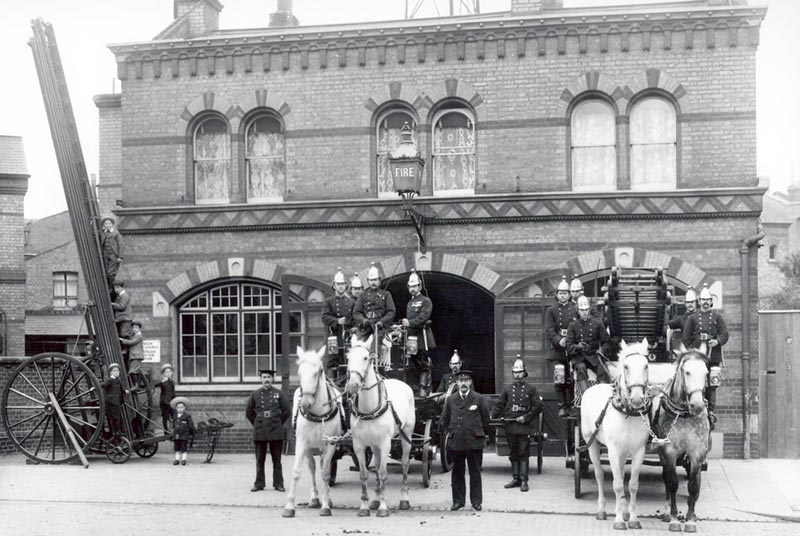
Shaw introduced a telegraph system in 1862, Siemens and Halske, linking the Headquarters at Watling Street with all fire stations by late 1863.
The new system sped up the receipt of calls and was considerably cheaper than the old method of runners or mounted messengers. In 1865, additional telegraph links were made between the West Ham Local Board and the Chandos Street Station.

Shaw played a game with the manufacturers of firefighting equipment of the time. He set one against the other, inviting them to demonstrate their latest products at his headquarters in Southwark, in front of London Society. His two main suppliers were Merryweathers from Greenwich and Shand Mason of Blackfriars. Shaw wanted to replace the manual fire engines of Braidwood with horse drawn steamers on land and provide steamers for use on the River Thames.
The new fire stations had sloping floors called ‘runs’ which allowed the steamers to gather momentum as they rolled forward and help the horses to gain speed at the same time. If a steamer was out of action or required maintenance it was referred to as ‘off the run’, a term which is still used today.
On the river, steamers were placed on floats and rowed to incidents. River fireboat crews were called floaties up until the Second World War.
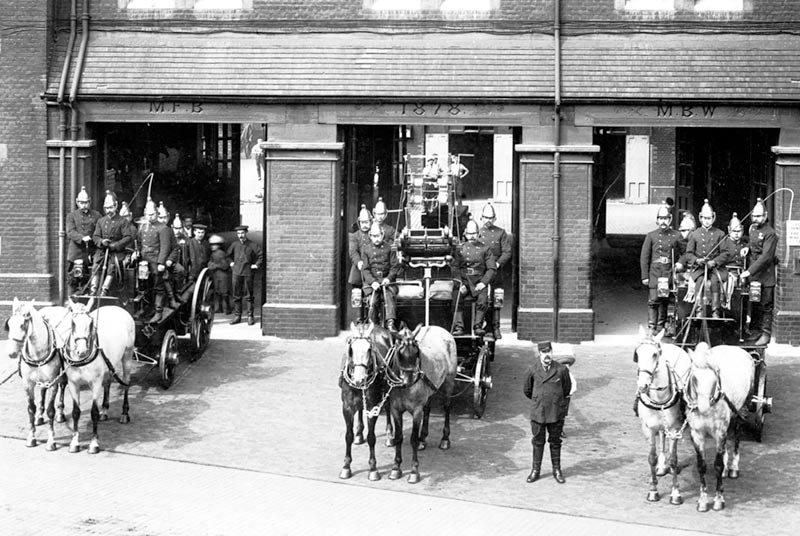
Shaw set up regular inspections of buildings. He was particularly concerned about the fire risks in theatres which had increased in number during the Victorian era. Candles and unprotected gas lights were used as footlights and the large stage curtains, that separated the stage from the audience were rarely flameproofed. Behind the scenes the housekeeping was generally poor with paint, glue and costumes stored together. In 1878 Captain Shaw published his book ‘Fires in Theatres’ in which he outlined his ideas for greater safety.
Despite Shaw visiting many of the London theatres and imploring the owners to reduce the risks they were taking; the situation became critical by 1882. Shaw was asked by his employers to produce a report for the government which highlighted the worst properties and suggested the improvements to fire safety that needed to be made.
The report was acted upon, with some of the worst offenders closed down and the remainder given action plans to improve safety for the cast and audiences. Shortly after the report was published, a major fire took place at the Alhambra Theatre in Leicester Square. The fire was attended by the Prince of Wales (later King Edward VII), who had an interest in the fire service and would often attend incidents. He was nearly killed when a wall of the theatre collapsed. This gave an extra impetus to Shaw’s fire safety message.
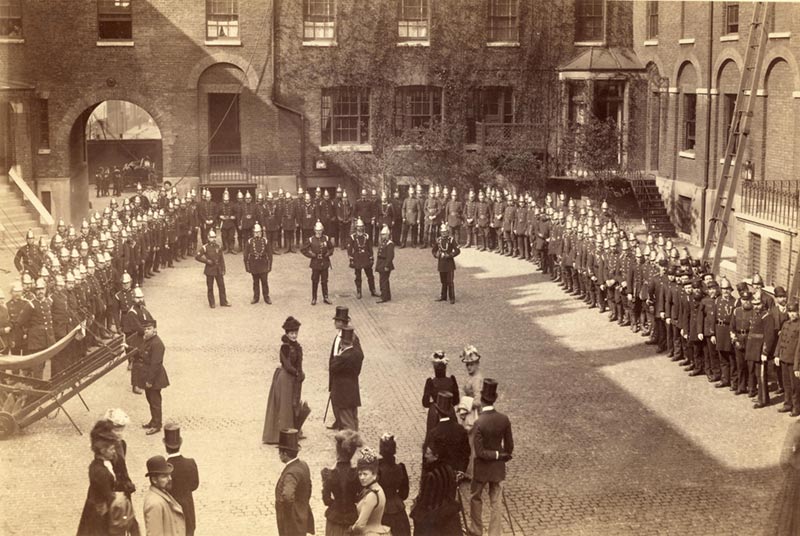
In 1889 the London County Council (LCC) was introduced and was responsible for the Metropolitan Fire Brigade. Shaw did not relish the tighter control of the Brigade under the LCC and after 30 years of service he decided to retire.
“Gentleman, having completed 30 years’ service in the Brigade, I desire to obtain my pension in accordance with the regulations.’ Eyre. M. Shaw, Chief Officer, M.F.B.”
He retired on 31 October 1891 and on his last day he was awarded Knight Commander of the Order of Bath by Queen Victoria. He died in Folkestone in 1908 and is buried at Highgate Cemetery.
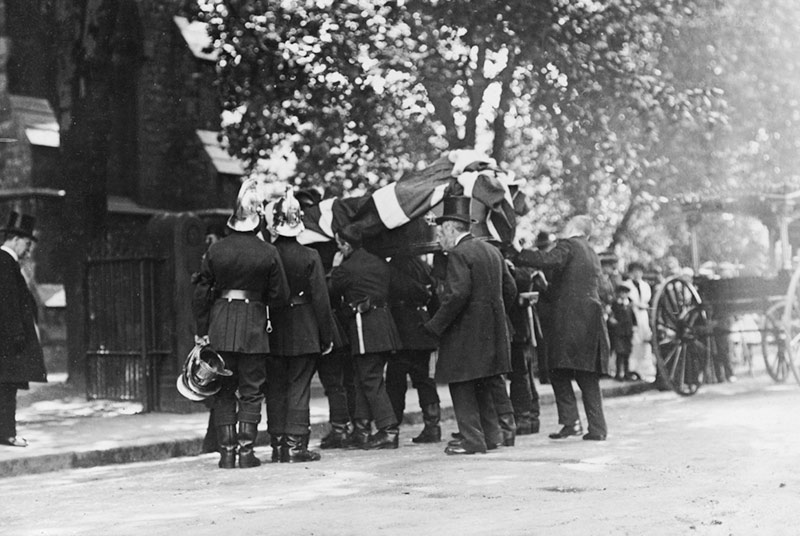
This article was researched and written by museum volunteer David R.